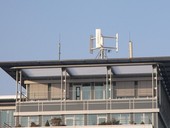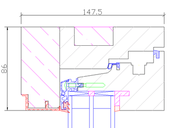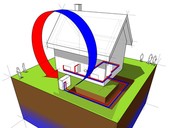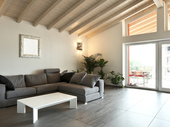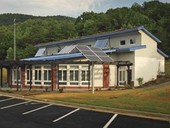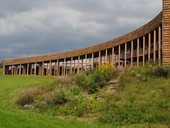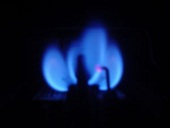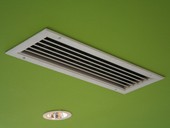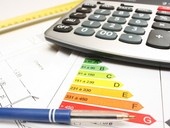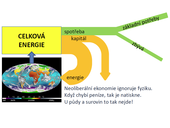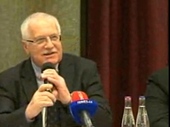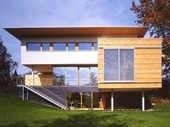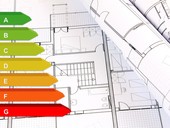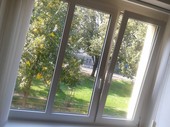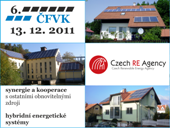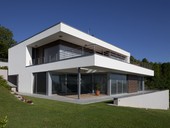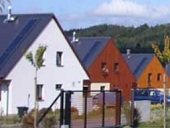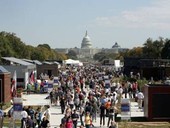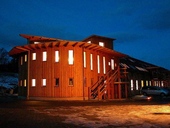Small wind turbines in comparison with large ones are usually applied at much lower altitudes, which correspond to the substantially lower wind speed. Wind speed at nominal power is achieved rarely or never. For estimation of energy production a dependence of power output on wind speed (performance curve) at lower wind speeds is substantial.
Archiv článků od 17.10.2011 do 12.3.2012
This paper describes the construction of window for passive houses, from the perspective of current status and vision for the future. Describes the design of windows for passive houses, certified by PHI in germany. Also shows the future design of windows for passive houses, where the window frame overlaps the edge of window glazing.
The article deals with the introduction of underground heat exchanger for preheating and precooling air for buildings. The introduction is devoted to the description of the system and its individual components and parameters that influence the behavior and performance of the system most. The second part presents a simple model, where you can see how each change affects the actual parameters of heat and cold, which can be gotten from the system.
This is a highly relevant article dealing with the comparison of two types ventilation - Natural ventilation through windows and controlled mechanical ventilation. The issue of ventilation in renovated homes in our country is still relevant. This paper describes a broad-based experiment measuring the intensity and quality of ventilation in two almost identical apartment houses. The conclusion confirms the well-known experience that controlled ventilation provides both - improved indoor air quality and the energy savings.
The first public school in the U.S. in the passive standard (K-12) was completed in November 2010. Passive house certification from the American Passivhaus Institute (PHIUS) was received in February 2011. The whole development project was quite long, so it is presented only briefly with the focus of our server. Article is provided in translation with the kind permission of the author.
Regular inspection is focused to the boiler, smoke flue and accessories condition, its security and regulation. In addition to the technical condition and maintenance, the documentation, operating instructions, manuals and other documents are under inspection. It quantifies the overall boiler efficiency of measurement results, sets reference respectively minimum boiler efficiency and suggests possible actions.
The requirements for ventilation of residential buildings according to the standard ČSN EN 15 665/Z1
The ventilation rate in residential buildings is very discussed in present. The situation was complicated by missing or inaccurate requirements in legal regulations and technical standards. In February 2011 came into force on the national annex Z1 of European standard EN 15 665, which defines requirements for ventilation of residential buildings and also recommend suitable ventilation systems. Article briefly informs about the contents of the National Annex.
The aim of the authors is to evaluate the economic effectiveness of choosing of the heating system for family passive houses and to compare it with the same systems used in common buildings. Methodology of the comparison consist in real market offers and price lists in price level of first half-year 2011. The work is based on the case study of simulated passive house. The result encompasses confrontation of the overall costs of energy supply for family house for 15 years. At the end of the article the overall benefits of passive houses building and management are discussed.
Oil is the energy source No. 1, and the world is in a period of peak oil. Serious paralysis of economy after peak oil is almost certain, because economic growth demanded increasing consumption of fossil fuels from the beginning of the industrial revolution.
The Czech Republic can ensure its energy security only in integrating with Europe, and especially the connection to Europe's energy (especially electricity and gas) and transport networks and participation in the transformation of post-fossil energy and transport system.
On Wednesday, January 11th, the public had the opportunity to attend a seminar of Václav Klaus: Zero energy buildings - an ingenious design, or pointless EU regulation? In this paper you can listen to it again. Speakers were Václav Klaus, Pavel Gebauer (MIT), Ivo Strejček (MEP), Karel Kabele (Czech Technical University) and Lukáš Petřík (Parliamentary news editor).
Klaus and certainly anothers see the concept of (almost) zero energy building as a chimera, a concept that someone created and prescribed by regulation. Fortunately, we know that is not entirely without support in practice. Unfortunately at the seminar, for the ears of the President, or others, it was not clearly said that the design and realisation of efficient buildings is under way, and without regard to European regulations and time ultimatums. Many architects and designers consider it absolutely for granted, and design it of their own volition and on their own beliefs. If we leave aside the fact that the emergence of the directive was the political decision, which is needed to cope, we can build efficient buildings.
Paper presents an example of energy performance calculation according to the current methodology of evaluation of the energy performance of buildings. The example shows how it is unreal to achieve the passive standard by another insulation. It is possible to meet the energy requirements for heating buildings by non-traditional forms of energy such as using heat pumps with photovoltaic systems, etc.
Analyze of passive buildings internal microclimate is described in this contribution. The article focuses on inside state from point of view of thermal -moisture, odour, aerosol or toxic assessment and its influence on inhabitants health. A separate section discribes the inside moisture level during ventilation or passive buildings heating.
Energy performance of the building is fundamentally influenced by its cover. Glass and opaque part of of the building envelope affect both sides of the heat balance - heat gains and losses. Their effect is influenced by meny other factors. It can not therefore in general and clearly be said how to design the individual elements the building envelope to achieve optimum ratio of profits and losses. This paper focuses on family houses and describes how for different variants of houses with different envelope parameters changes the influence glazing and shading, and their optimum potential in terms of heat balance in the winter and summer.
In connection with the new wording of the Energy Performance of Buildings Directive EPBD (recast), 2010 [1]) it is certainly necessary to discuss the next generation of buildings with minimized energy use. It should be noted the connection between the clearly described categories of low-energy and passive buildings on one side and zero-energy buildings on the other. Moreover the directive contains a number of other important issues, among others the setting of energy criteria on so callled cost-optimum level.
The paper comments the possible set of criteria describing in a unified way all categories of energy optimized buildings, including passive and zero-energy buildings. New Czech technical standard CSN 730540-2 Thermal protection of buildings. Part 2 Requirements [2] (November 2011) supports this approach.
On the day of the autumnal equinox in the U.S. started its fifth year of the prestigious international competition Solar Decathlon 2011. In this competition university teams from all over the world competed in building of energy efficient houses. In this ten-day contest containing ten disciplines was the most successful team of The University of Maryland´s this year.
This paper deals with changes in the newly revised technical standard for building thermal performance in terms of ventilation and distribution of air in the building. This paper describes the formulation of requirements, when it is necesary to guarantee a quality of indoor environment and also minimize the energy consumption of ventilation. Attention is also paid to disseminating of air into leaks in the facade or roof.
For some time I start to have an allergy to the word ecology and ecological architecture. These words can mean many things, depending on what you need. So I'll try to put my opinion into a more specific framework. What is green architecture? Why is modern architecture abnormal when waste is normal? What is the situation in the Czech Republic for the use of "POTENTIAL SAVINGS?" How is the Czech Republic architecture environmentally friendly?
zpět na aktuální články
